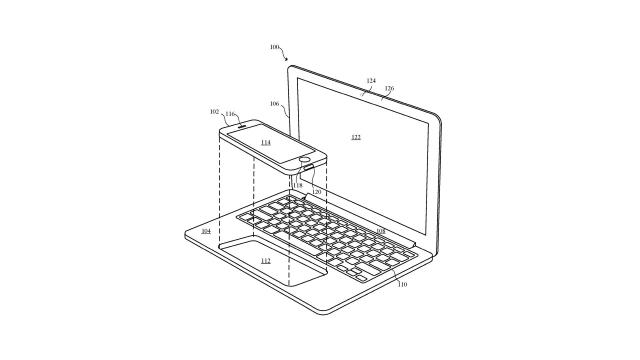Apple is calculating about its product releases. The company usually introduces new features only after spending plenty of time researching and optimising them, which in some cases, is long after they are first adopted by others. This conservative approach understandably frustrates some customers, who accuse Apple of releasing the same devices year after year. In its defence, such time and investment often result in i-device features working better than they do on other competing devices (see Face ID), although it doesn’t always work out (see Butterfly keyboard).
But just because Apple isn’t always quick to adopt new technology doesn’t mean the folks working in a stationary spaceship in California aren’t drumming up creative new ideas. As countless patents filed over the last decade have shown, Apple is constantly experimenting with quirky concepts, some of which are just downright silly. To honour those “see if it sticks” ideas, we’ve put together a list of the strangest patents Apple has filed.
iPhone Turned Mac
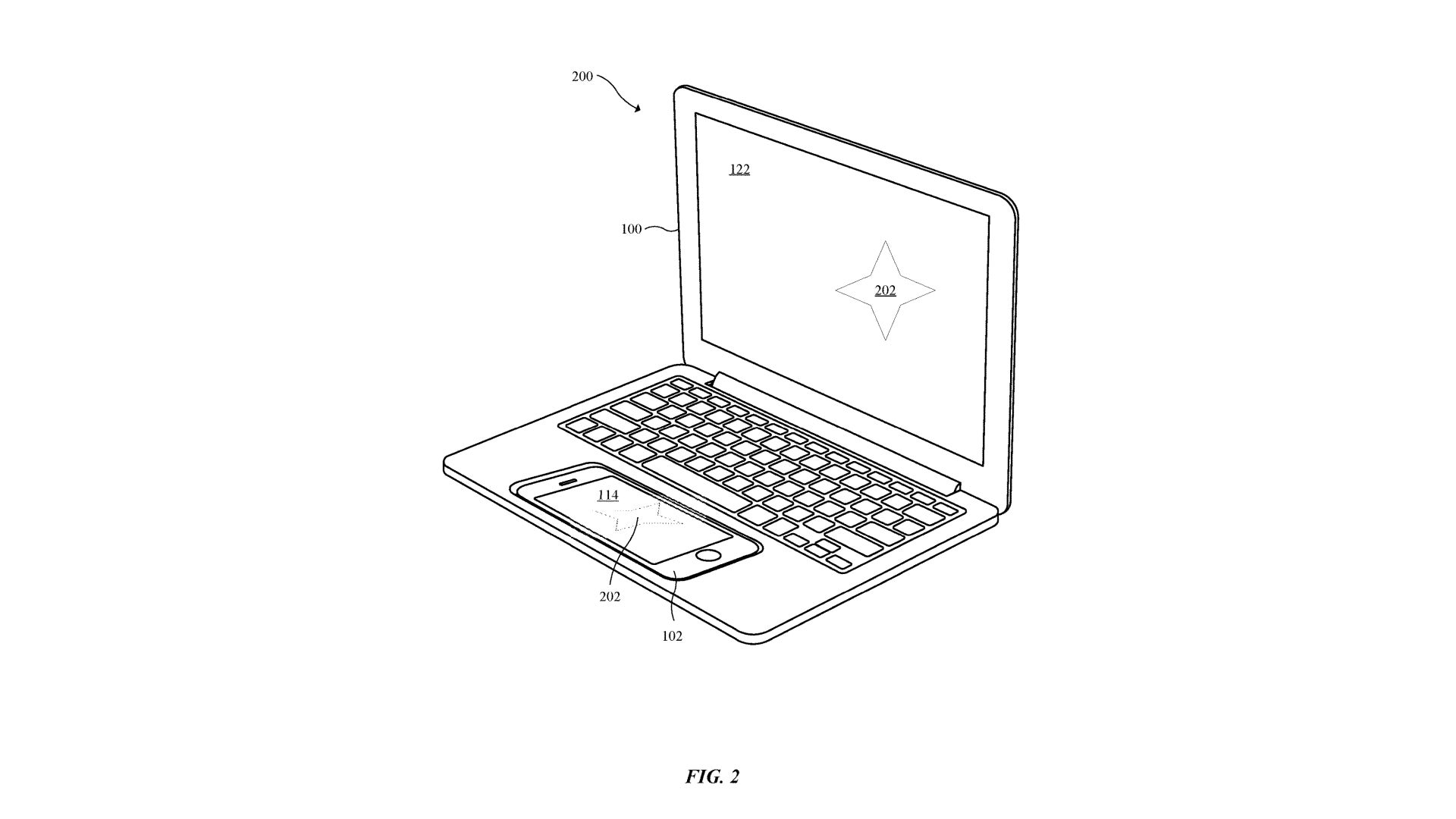
Apple has an airtight ecosystem with well-integrated software. It’s a concrete benefit to owning Apple’s full stack of products: iPhones, iPads, Macs, etc. However, when it comes to hardware, Apple draws a clear line in the sand, less willing than its competitors to blur the lines between product types.
For example, Apple maintains that the iPad will remain a tablet even though it contains the ingredients needed to double as a laptop. Conversely, a detachable or convertible Mac will probably never exist. Well, probably.
Thanks to a patent filed in 2017, we know Apple is at least toying with the idea of creating a strange hybrid device that would essentially turn an iPhone into a laptop. You read that correctly, an iPhone. The conceptual device is essentially a display with a battery, and when you insert your iPhone into a slot where the trackpad would be, it transforms into a laptop. The phone powers the entire experience, providing processing, graphics, memory, and storage.
In another iteration, an iPad slots into a gap where the laptop screen would reside, providing the visuals and power for what is essentially a standard laptop deck (keyboard, touchpad, etc) and the frame, or bezels, of a display.
Self-adjusting Apple Watch Bands
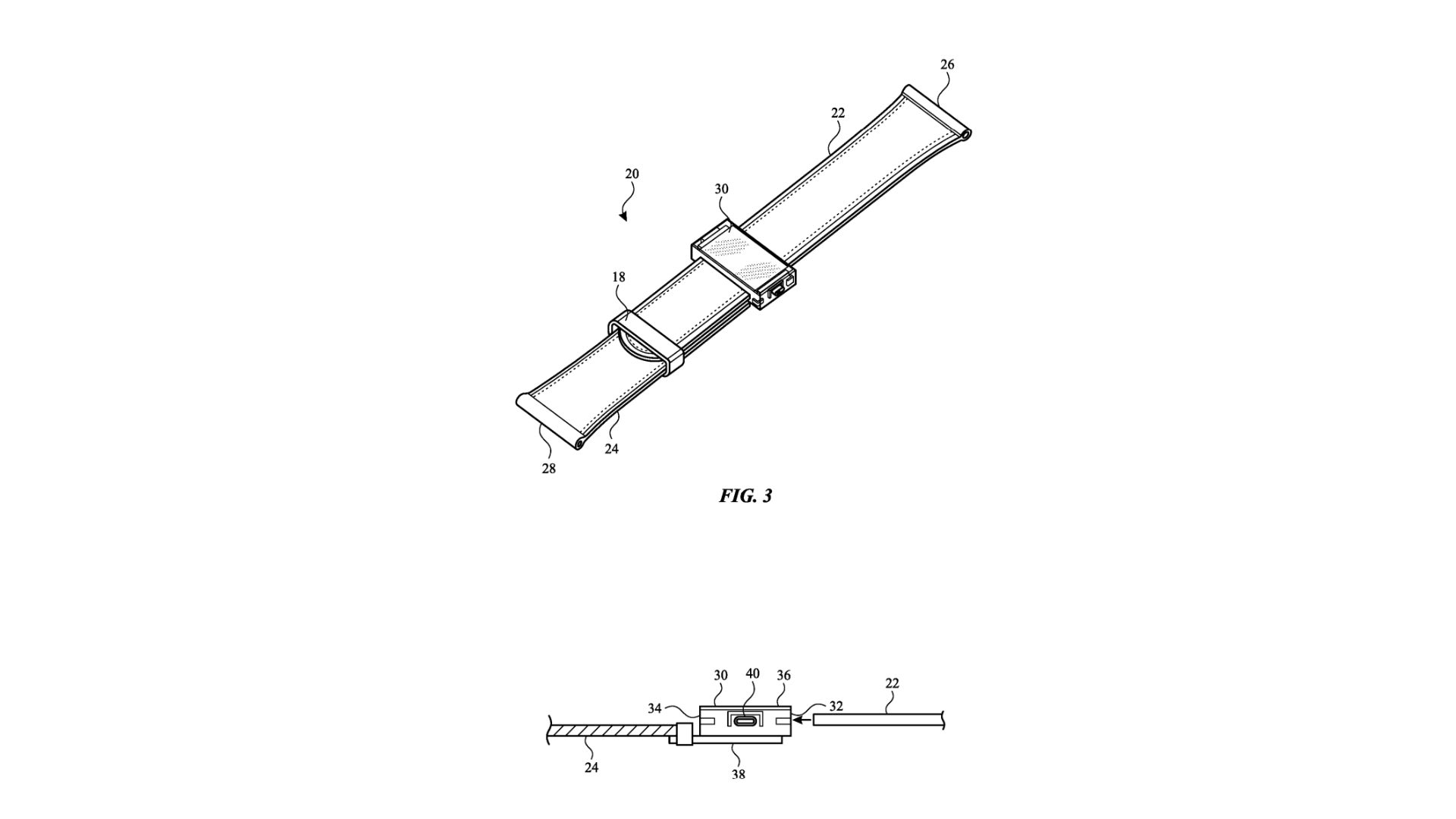
Remember the Nike shoes in Back to the Future? The ones with self-fastening laces? Think of those, but in watch form.
In 2017, Apple filed a patent for a self-adjusting watchband, which would automatically tighten or loosen based on biometric data collected by the watch. It could be made from Nitinol, an elastic metal alloy that can adjust and maintain its shape. Other ideas include an internal ratcheting system or gas/fluid bladders.
This isn’t the only bizarre Apple Watch patent. The company also looked at ways to put a camera in its wearable.
Concert Filming Deterrent
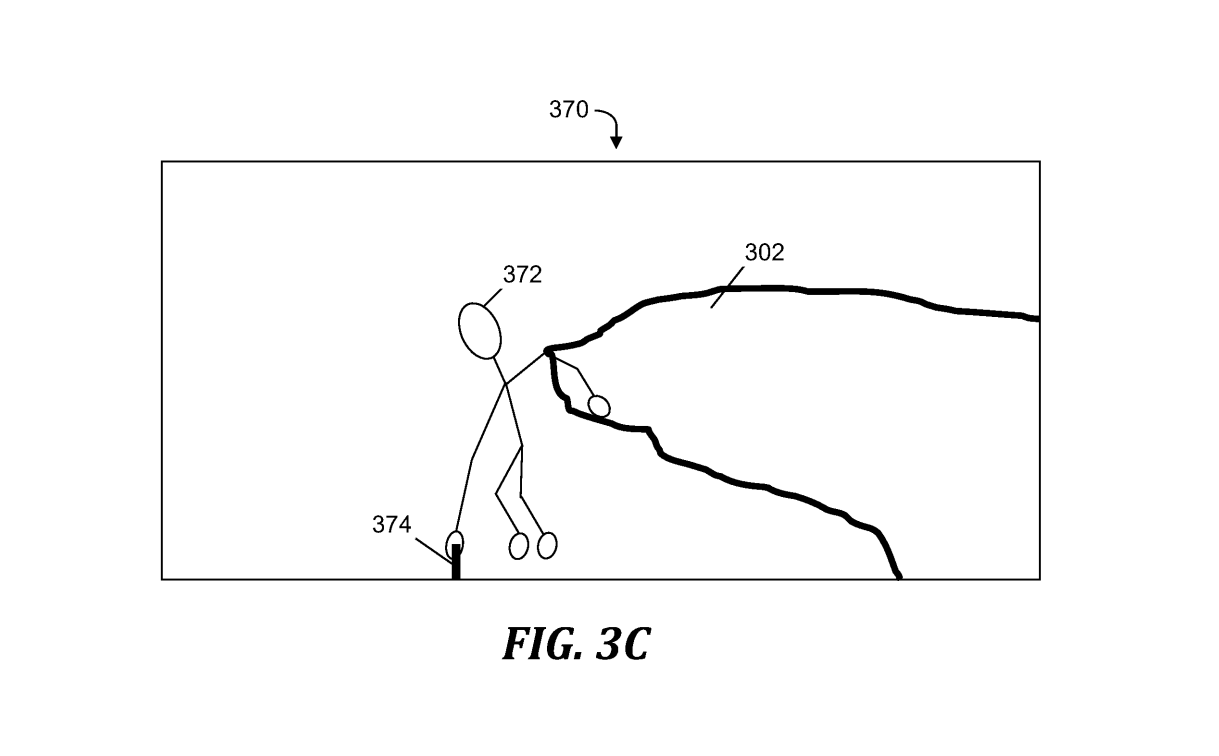
Attend a concert today, and your view will almost always be obstructed by someone holding up their smartphone to take videos or photos while simultaneously ignoring what’s going on in front of them. It turns out Apple came up with an idea to snuff out that obnoxious behaviour.
Back in 2016, Apple was awarded a patent for a system that would prevent iPhone users from recording videos at concerts. It’d use infrared signals to send messages to your phone that tell it to disable recording. It’d also piss a lot of folks off, but this is one way to remove the temptation of capturing a memory on your smartphone.
Car Without Windows
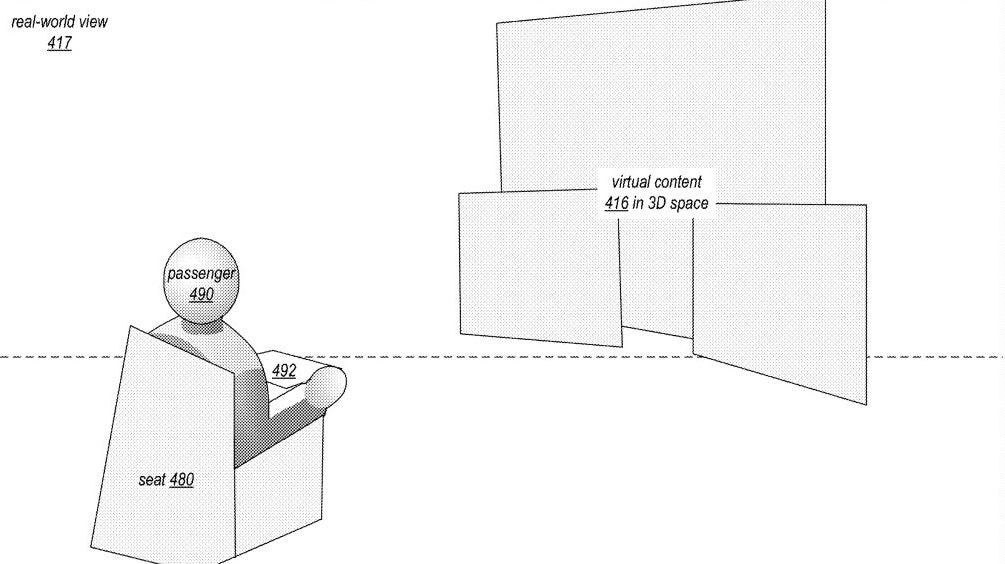
You might have seen this circulating around the interwebs and thought it was a silly joke written by a satirical news site. I’m afraid it isn’t. Apple did indeed file a patent describing a window-less autonomous car that replaces glass with cameras.
The company notes in its patent that “autonomous vehicles may have limited or even no windows, and thus the motions that passengers experience in such vehicles may not match what they are visually seeing, potentially causing motion sickness.”
To solve this issue, Apple would use a VR system that could “match virtual views that match visual cues with the physical motions that a passenger experiences.” The company claims windows are inherently unsafe and believes a VR system would not only be safer but allow for smaller, cheaper cars that felt larger on the inside.
I’d bet my internal combustion engine car that we won’t be driving in a window-less Apple vehicle anytime soon. However, this patent did at least spawn the already overused but still chuckle-inducing “Apple hates Windows” joke. So…there’s that.
iPad Keyboard with Touch Bar Notch
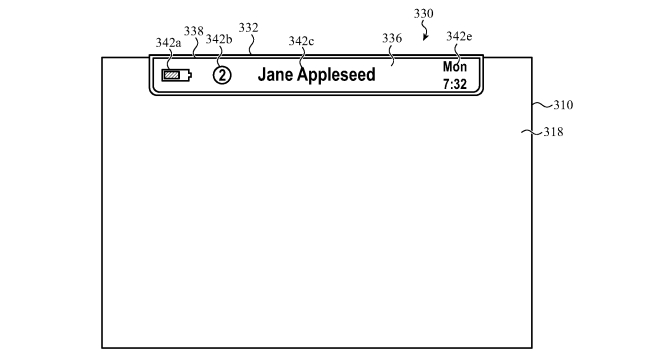
In a recent patent, Apple describes a tablet accessory with a base portion and a “coupling mechanism,” which would sit alongside a keyboard that uses electromechanical keys. Apple describes several iterations of this detachable concept, each of which gives users the flexibility to place the iPad in various orientations.
In one scenario, Apple describes a “coupling mechanism,” or a hinge, that overlaps the back panel of the tablet and has its own auxiliary display showing a custom message, battery levels, the date and times, etc. Sort of like a — dare I say it — Touch Bar for the rear panel. In a more troubling version, that secondary screen overlaps the main one.
A more traditional hinged keyboard accessory looks similar to the Surface Pro, where the tablet snaps into a keyboard attachment on the bottom edge and closes like a book. In one concept, the hinge supports additional accessories, like a camera, projectors, or microphone.
Commadore 64 Mac
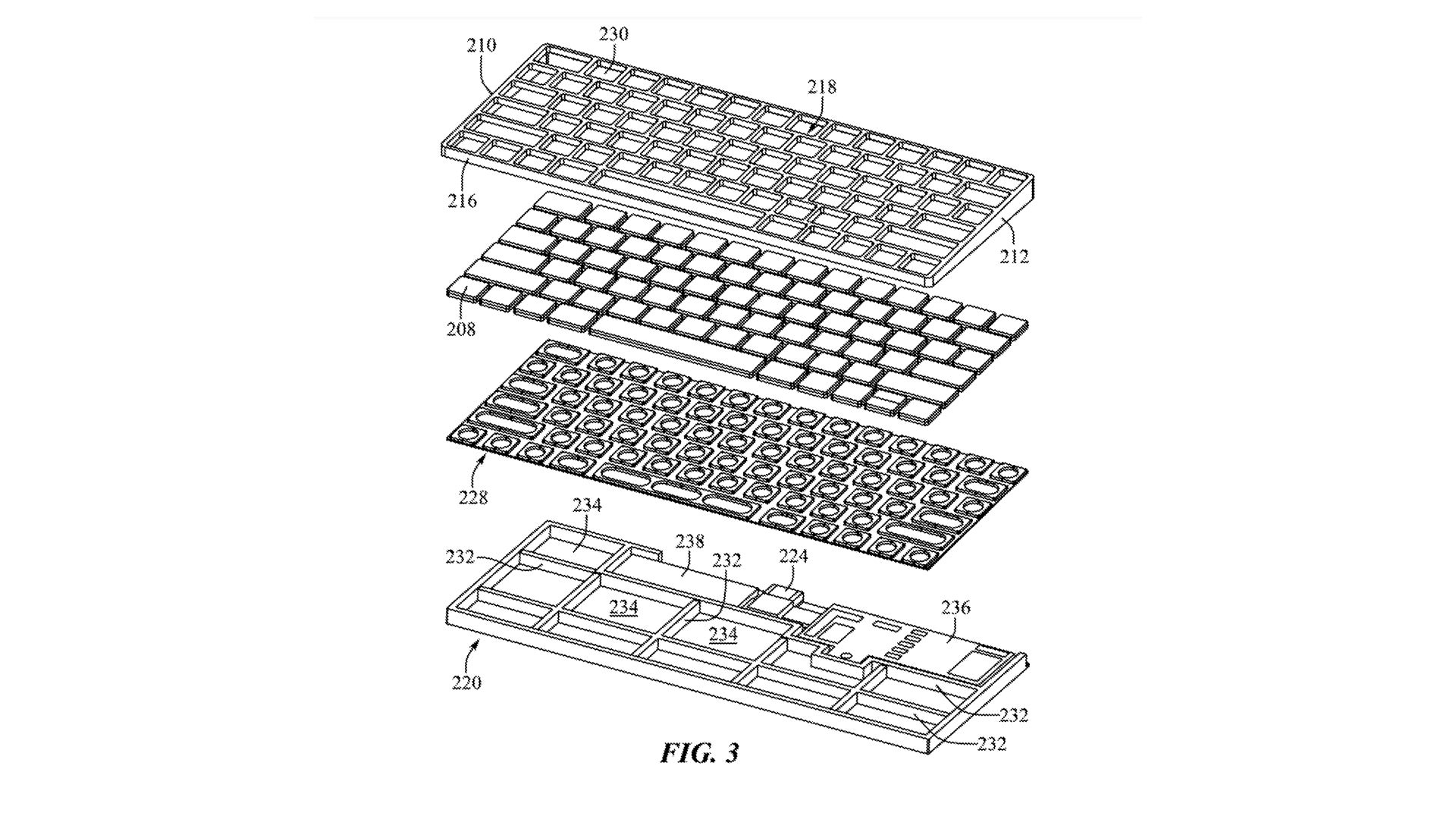
When I was researching cool mods sprouting from the modular Framework Laptop, I came across the YouTube channel Elevated System Christopher “CJ” Peet, who used a Framework mainboard and stuffed it inside a mechanical keyboard chassis. It was a modern take on the Commodore 64, something Apple has seemingly also considered.
Filed in 2020, a patent describes a desktop computer disguised as a keyboard. In the patent, Apple notes how carrying around a desktop “can be inconvenient, awkward, and difficult, especially when frequently repeated.” I think we all agree. The solution? Turn your keyboard into a computer by fitting in a power supply, USB-C port, and all the chips and whatnot needed to make the thing run. Raspberry Pi’s already done it, after all.
Virtual, Adaptable Keyboard
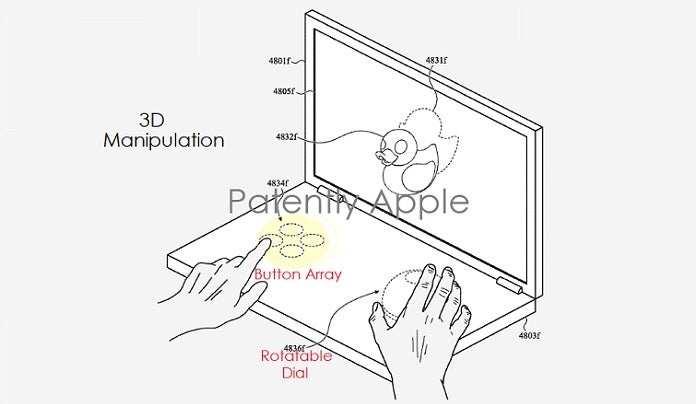
This one isn’t so farfetched, though we hope Apple learned its lesson after the whole Butterfly Keyboard fiasco. People want their keys to go up and down! Anyway, Apple was granted a patent last year (via Patently Apple) for a virtual MacBook keyboard that would be completely customisable. Images in the patent showed a virtual keyboard with a normal QWERTY layout, another with a split economic layout, and a third that replaces keys with buttons.
It would essentially turn the MacBook’s deck into a blank canvas. There could be areas for you to wirelessly charge your phone, spots for a fingerprint reader, and any buttons, like the touchpad, might include capacitive or gesture controls instead of simple on/off actuation. This isn’t an entirely novel idea considering Lenovo already released a laptop with a similar concept, though it used E Ink for its keys.
Shake to Print
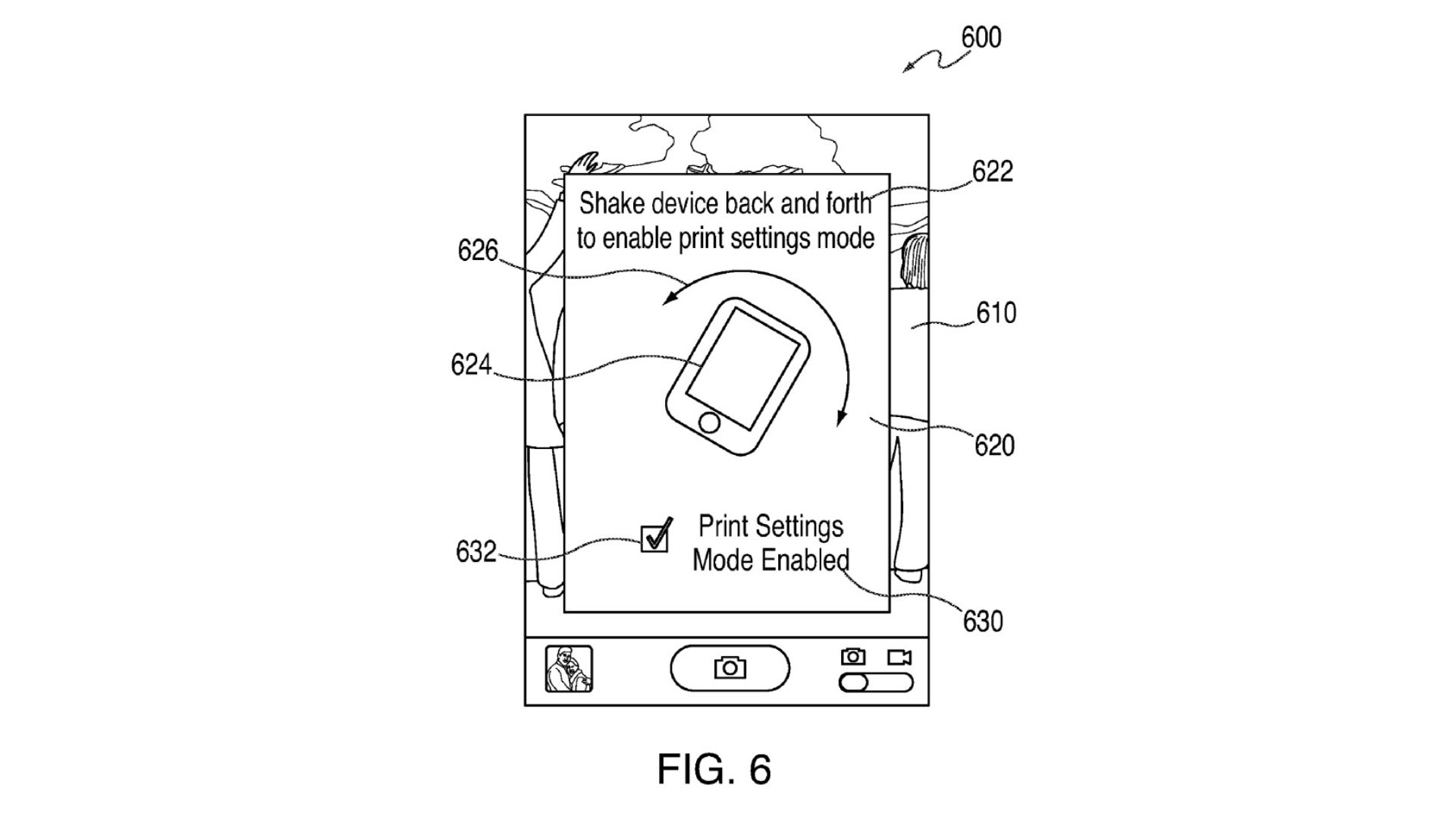
We’re going way back for this one. The easiest way to explain it is by refreshing your memory on Apple’s “shake to shuffle” feature, which would shuffle your music when you jiggled your iPhone or iPod (RIP, by the way). With shake to print, you would physically flip or shake your device to enable or disable certain printing features.
It sounds silly but…OK yeah, this is now and was then a pretty stupid idea. Apple clearly agreed, as the feature never went from paper to product. I can see a couple of smiling Apple engineers reminiscing over how bizarre this concept was. If only we could shake to delete it.
Cheese Grater iPhone

We landed on “Absolutely Not” for the headline on this one. While the cheese grater look is almost palatable on Apple’s Mac Pro, it’s frankly inappropriate on an iPhone.
In a patent spotted last year, Apple discusses an iPhone with a “three-dimensional structure” that “can include the body defining a first pattern of first cavities extending into the body from the first surface and the body defining a second pattern of second cavities extending into the body from the second surface. One or more first cavities can eccentrically intersect with one or more second cavities to define a pattern of apertures in the body.”
Um. What!? I don’t know what that means, but a handy image Apple provided clarifies that the jumble of words above is talking about an iPhone that looks like a cheese grater. Apple says the design could be functionally beneficial, but I’m not hearing any of it. Absolutely not.
Vibrating VR Socks
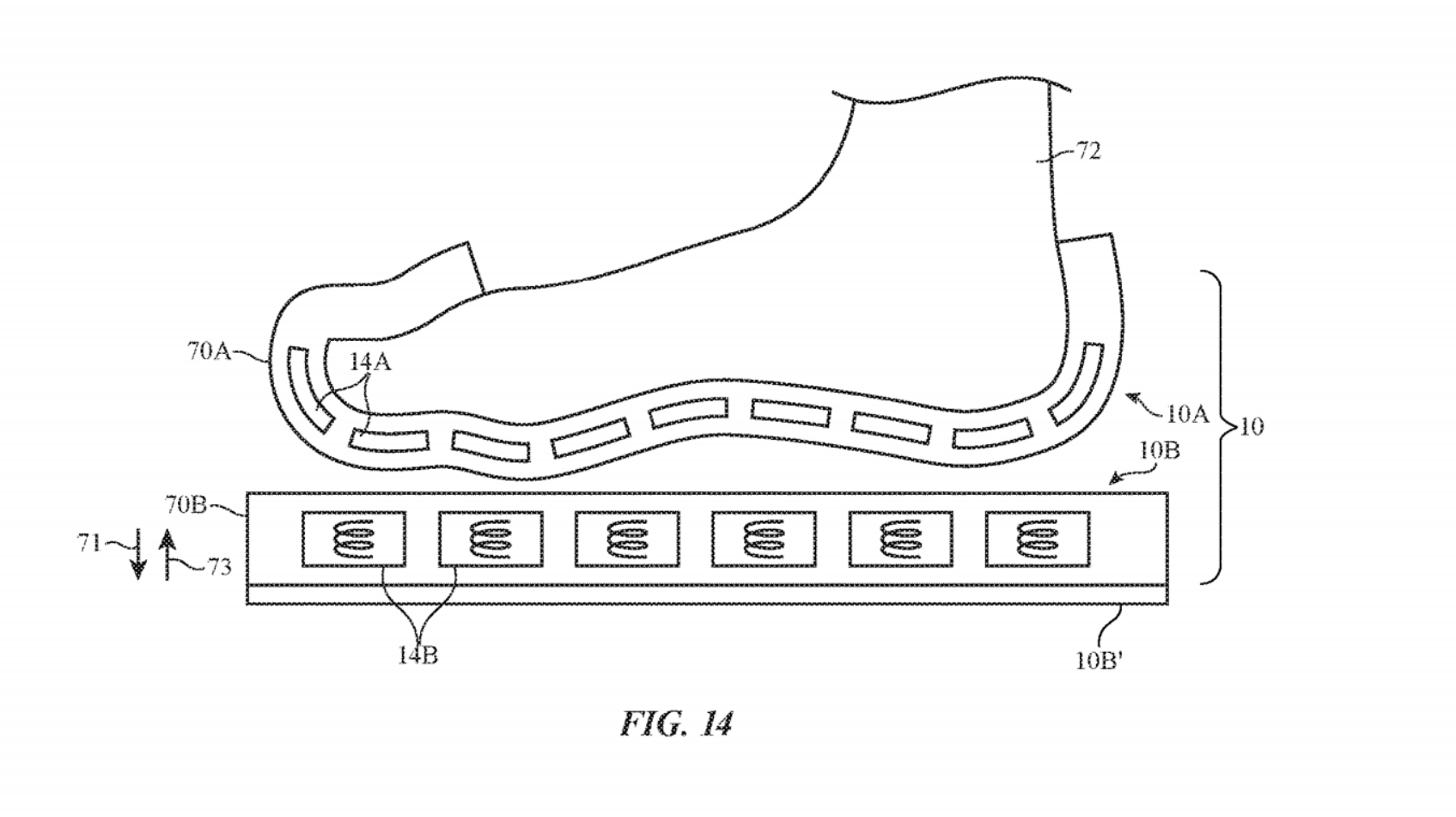
Unless rumours from multiple reliable sources are wrong, Apple is working on its own AR/VR headset. It’s also toying with the idea of a device for the other end of your body; as a 2021 patent reveals, Apple is looking into “haptic output devices” for your feet. They don’t technically need to be socks or shoes — this could arrive in the shape of something you stick to your skin.
In any case, the goal is to give VR users the sensation of walking on different surfaces or moving in different directions while actually staying in place. The company talks about all sorts of sensors and inputs it could potentially include to add another layer of immersion to its upcoming VR experience.
Editor’s Note: Release dates within this article are based in the U.S., but will be updated with local Australian dates as soon as we know more.
